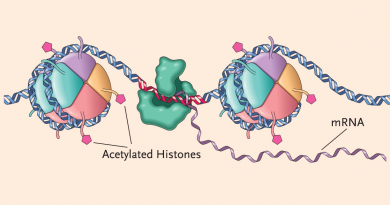Less may be more in treating patients with bacteria in the urine

By Dipali Pathak
When doctors are confronted by the dilemma of patient who has bacteria in the urine but no symptoms to indicate that, they sometimes overtreat. However, an expert at Baylor College of Medicine and the Michael E. DeBakey Veterans Affairs Medical Center in Houston and her colleagues find there are other ways to reduce orders for urine cultures and prescriptions for bacteriuria associated with catheters. Their report appears in JAMA Internal Medicine.
This condition is very common in catheterized patients and doctors’ first step often is treatment with antibiotics. However that can contribute to the growing problem of antibiotic overuse and emergence of resistant super bugs.
Trautner and colleagues designed an intervention focused on the aspects of behavioral change that are relevant to the problem of over-treating asymptomatic bacteriuria. The intervention was designed to address two major problems with asymptomatic bacteruria. The first was the knowledge gap –teaching providers about what asymptomatic bacteriuria is, how to recognize it, and the strong evidence base for non-treatment of asymptomatic bacteriuria. The other is the attitude around the topic – the fear of a bad outcome if antibiotics are not given.
Difficulty differentiating
Because providers have difficulty differentiating cases of asymptomatic bacteriuria from catheter- associated urinary tract infections (CAUTI), they designed a campaign called ‘Kicking CAUTI: the No Knee-Jerk Antibiotics Campaign.’ Based on the guidelines from the Infectious Disease Society of America on asymptomatic bacteriuria and catheter-associated urinary tract infections, researchers created an algorithm that urged providers to ask themselves two questions before they send a urine culture or prescribe antibiotics:
Does this patient have any of the evidence-based symptoms of catheter-associated urinary tract infection?
If any of these symptoms are present, such as fever, is there a non-urinary explanation?
They taught acute care and long-term care providers how to use the algorithm case-based audit and feedback sessions.
Reducation
With this algorithm, researchers were able to reduce the overall rate of urine culture orders during the intervention period and subsequent maintenance year.
“The intervention involved helping healthcare providers learn when they don’t need to do a test and when they don’t need to give antibiotics to patients who are asymptomatic,” said Dr. Barbara Trautner, associate professor of infectious diseases in the departments of medicine and surgery at Baylor and first author of the paper. Trautner is also a researcher with Center for Innovations in Quality, Effectiveness and Safety at the Michael E. DeBakey Veterans Affairs Medical Center in Houston.
“As healthcare providers we always want to feel that we are doing everything we can for our patients. Sometimes it makes providers very uncomfortable to decide not do something, but frequently the right or safer choice is to not do something. In this case, not giving antibiotics when the patient is asymptomatic is the safer choice for the patient.”
Trautner and colleagues designed an intervention focused on the aspects of behavioral change that are relevant to the problem of over-treating asymptomatic bacteriuria. The intervention was designed to address two major problems with asymptomatic bacteruria. The first was the knowledge gap – teaching providers about what asymptomatic bacteriuria is, how to recognize it, and the strong evidence base for non-treatment of asymptomatic bacteriuria. The other is the attitude around the topic – the fear of a bad outcome if antibiotics are not given.
Because providers have difficulty differentiating cases of asymptomatic bacteriuria from catheter-associated urinary tract infections (CAUTI), they designed a campaign called ‘Kicking CAUTI: the No Knee-Jerk Antibiotics Campaign.’ Based on the guidelines from the Infectious Disease Society of America on asymptomatic bacteriuria
Campaign
Through this campaign, researchers were able to dramatically decrease the number of urine cultures ordered. At the Houston VA, the intervention site, the total number of urine cultures ordered decreased by 71 percent over the course of the intervention. Antibiotic treatment of asymptomatic bacteriuria decreased by more than 50 percent during the study. No significant changes occurred at the comparison site over the same time period.
“If you treat asymptomatic bacteriuria in patients without symptoms, all that you do is give them antibiotic side effects and increase their risk of infection with resistant bacteria – you do not improve outcomes, except in pregnant women and those who are about to undergo invasive urologic procedures,” said Trautner.
The next step is to take this implementation program to a broader audience, including VA and non-VA hospitals and long-term care facilities.
Others who took part in the study include Dr. Larissa Grigoryan, Dr. Nancy J. Petersen, Dr. Sylvia Hysong, and Dr. Aanand D. Naik of Baylor and the DeBakey VA and Dr. Jose Cadena and Dr. Jan Patterson of the University of Texas Health Science Center at San Antonio.
This study was supported by grant IIR 09-104 from the Veterans Affairs Health Services Research & Development Service. Support for this work also included resources and use of facilities at the Houston VA Center for Innovations in Quality, Effectiveness and Safety at the Michael E. DeBakey VA Medical Center, Houston, TX.



